
views
Making Your Plans

Try reducing your spending before you commit to living without money. Making the decision to live without spending money is life-changing, particularly if you are living with and/or supporting others. You may find it helpful to start small and go for a week or month without spending money to see if the cash-free life is for you. There are many ways to cut spending in your daily life, and even if you don’t decide to go totally cashless, these techniques will help you save money. If you live in an area where walking or biking to work is feasible, you could avoid your commute and its expenses (gas, tolls, parking, car maintenance) by choosing self-powered transportation. Plus, it’s great for boosting fitness! Try going for a week without buying any groceries. Use only the foods you currently have in your pantry and fridge to make meals. Many websites are available to help you create meals from ingredients you already have on hand. If you enjoy going out for entertainment, find free entertainment in your area. Your local newspaper’s website will usually have listings of free activities and events. In addition to books and free internet, public libraries often have movies you can check out for free. Going for a walk or spending the evening playing games with friends or family is always free. www.moneyless.org is an online database of useful tips and tricks for pursuing a cash-free existence.

Examine your (and your family’s) needs. If you’re a single person, living without money will be much easier to manage than if you have a family. Because living cash-free is a huge commitment, you will want to make sure that your essential needs can still be met without money. For example, if you or a family member tend to require frequent medical care or prescription medications, living without money may not be a good option for you. If you live in an extreme climate, such as a place that is very hot or very cold, it may not be safe to live without some temperature control. This is especially true if your family includes small children or elderly persons, who are more prone to heat- and cold-related illnesses and fatalities.

Read about others’ experiences. Whether you want to take up a nomadic lifestyle such as the German cash-free liver Heidemarie Schwermer or live completely off the land and off-grid in a cave like Daniel Suelo, reading what the experience of living without money has been like for others will help you decide whether you’re up for the challenge. The Moneyless Man: A Year of Freeconomic Living by Mark Boyle is a first-person account of living without money. He has also written blogs, a book called The Moneyless Manifesto'," and established a low-cost living website called Streetbank. The Man Who Quit Money by Mark Sundeen is a biography of Daniel Suelo, a man who has lived without money for over 14 years. The 2012 documentary film, Living Without Money, documents the life of Heidemarie Schwermer, a German woman who has been living without cash since the 1990s.

Consider what you have to invest. Some things that make living without spending money easier, such as vegetable gardens, solar power grids, composting toilets, and water wells, require upfront investment. The financial rewards of reducing or even eliminating most of your household bills are significant, but may not happen overnight. If you live in an urban area and/or don’t own your home, your options for some of these things may be reduced. You should do some research to understand what is feasible for you.

Understand that some expenses may always be necessary. For example, if you require prescription medication, you should not simply stop spending money on it; consult a physician before stopping any medication. If you cannot or do not want to sell your house, you will need to continue making mortgage payments to avoid foreclosure and eviction. If you decide to keep a job, you will need to continue to pay taxes.
Arranging Accommodation

Live off the grid. Find or build a home that functions with solar, wind, or other renewable power. Use well water or a local stream for water. Install a composting toilet: it will save water, help the environment, and produce “humanure” for vegetable gardens. Campervans (sometimes called caravans or recreational vehicles) may be a good option if you cannot afford a full-size family home with these amenities. It is also easier to find a site near water with a mobile home. “Earthships” are eco-friendly, inexpensive dwellings that use waste products like old car tires and beer bottles as construction materials. You can often find these materials for free or very cheaply, and you can often barter for labor help. Even if you don’t choose to move house or live entirely without money, things such as solar power panels and composting toilets are friendly to both budgets and the environment.

Volunteer on an organic farm. [1] is an established, respected organization that coordinates volunteer opportunities all over the world. There is a small subscription fee for the service. Usually, you barter your labor for lodging and food. Some farms accept families. If you choose to volunteer in a foreign country, you will have to pay for a work visa. In addition, you will need enough money to cover your travel expenses. Volunteering on an organic farm can also be an excellent way to learn farming skills, which you can then use to grow your own food.
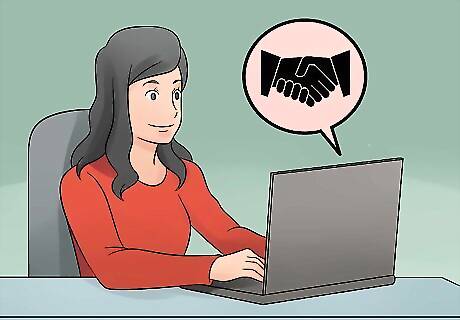
Move to a like-minded community. Many cooperative communities exist with shared accommodation and shared goals and ideals. They may be called “intentional communities,” “communes,” “co-ops,” “ecovillages” or “cohousing.” You may be able to barter skills or food for your housing and support. You can find more information about these communities [2]. You will probably want to contact a potential community and visit before you commit to living there. Communal living isn’t for everyone, and you’ll want to make sure your potential home and your personality and values are a good match.
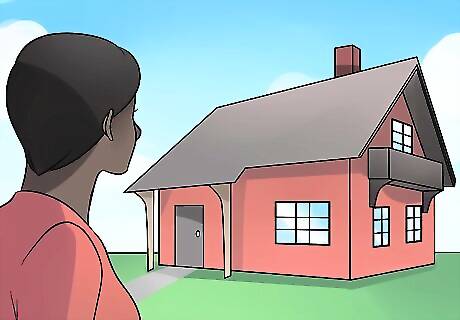
Become a house sitter. If you are happy to move from place to place, then building a reputation as a responsible, trustworthy house sitter is a wonderful way to travel and live in comfort. Join online organizations such as Trusted House Sitters or Mind My House, or make a name for yourself in your local community as the go-to person for when people leave on vacation. You can also check out organizations such as Couchsurfing or The Hospitality Club if you are looking for temporary housing, your plans are very flexible, and you are interested in meeting new people.

Live in the wilderness. It may take some time and effort to develop the necessary skills, but there are many opportunities for existing away from conventional housing. Caves and other natural shelters can be good choices. How to Live in the Wilderness Understand that this type of lifestyle is strenuous and requires excellent health and fitness. It is unlikely to be a good option if you are not in good health, or if you have children or elderly persons in your family. Move to a warmer climate. Living outside is much easier without vast fluctuations in temperatures, heavy rainfall, or frigid temperatures.

Consider joining a religious community. There are many religions with communities dedicated to renouncing material living, such as Buddhist Sanghas and Christian monasteries and nunneries. These communities usually provide basic life support essentials such as clothing, shelter, and food, in exchange for your service and commitment. If your values and faith make this experience a good match for you, you can research your options online or by contacting someone within the community you wish to join. Religious communities usually only accept individuals. If you have a family, this is unlikely to be a good option for you.
Finding and Growing Food

Educate yourself about your food options. If you plan to forage for food, find a good guidebook on what types of plants grow in your area, which are edible, and which are poisonous; Richard Mabey’s Food For Free is a classic, illustrated handbook that is widely available and well-reviewed. If you plan to grow your own food, research the most effective ways of dividing land, planting seeds, and tending to your crops. If you have a university or college in your area, see if it has a cooperative extension. These offices provide education for the community on many things, including food cultivation and foraging, and often it is free to attend classes or get information. Remember that foods grow seasonally. Berries tend to be ready to be picked in the summer, while apples and nuts are harvestable in the autumn. Greens are often harvestable year-round. Whether you forage or grow your own crops, ensuring that you have foods to harvest year-round will help you keep a nutritionally balanced diet.
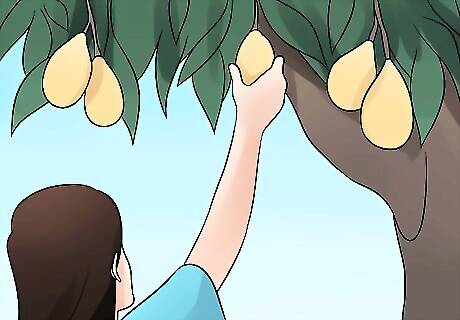
Forage for wild food. Picking wild foods that grow in your vicinity is an enjoyable, eco-friendly way to spend a day and prepare a meal. Even if you live in a suburban neighborhood, your neighbors may have things like fruit trees that produce more food than they can use. Always ask before you take food from others. How to Forage for Food in the Fall Avoid collecting any nuts or plants which show signs of being partially eaten by another animal, have been broken open in a fall from a tree, or seem partially rotten, as these are likely to contain dangerous bacterial growth. Avoid picking greens and other plants near busy roads, or industrial sites, where runoff from the cars or pollution from industry may have contaminated your food source. Instead, look for food in rural, less developed areas, away from the impact of cars, industry, and technology. Never eat anything you cannot identify. If you’re unsure whether something is hazardous, it’s best to bypass it.

Ask local stores, farmers markets, and restaurants for leftovers. Many grocery stores and restaurants throw away unwanted or excess food, as well as food that is past its sell-by date but still edible. Ask a manager what their policies are for disposing of these products. You can also ask vendors at local farmers markets if they have discarded produce you may take away. Be cautious of meat, dairy, and eggs, as the risk of bacterial growth and foodborne illness is higher. Independent and family-owned stores may be more accommodating than mega chain stores, although stores such as Trader Joe’s are well-known for giving discarded food away. Make a name for yourself in your neighborhood. Most households waste thousands of dollars in uneaten food a year. Consider putting up a flyer in your local community center about yourself and your cash-free aspirations. Many people may be happy to donate slightly off fruits, vegetables, or older dried goods.
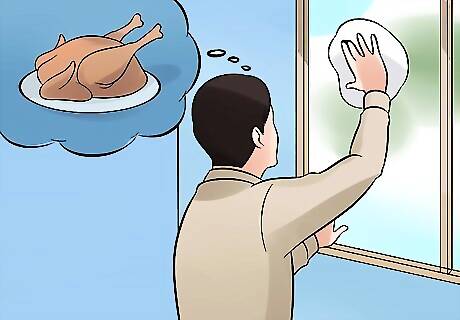
Barter for food. Bartering, or haggling, for food, is a great way to negotiate prices, add variety to your diet, and exchange items you don't want for things that are more useful. How to Barter You may find that people are willing to offer you food or goods in exchange for odd jobs such as window washing or lawnmowing. Look at what you have to trade. Do you grow vegetables that your neighbors don't? Do you have skills that people around you need? Consider using your homegrown potatoes and handpicked berries, your fence-painting or babysitting skills, and your dog-walking experience to trade for fruits that you cannot grow or pick on your own, Remember: In a successful negotiation, both parties win. Be fair in your request. Is an hour of babysitting really worth ten pounds of fresh apples? Or is it more worth five?
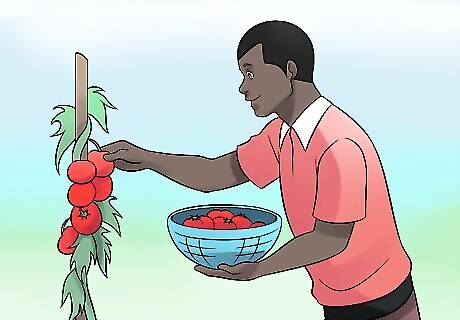
Grow your own food. The art of gardening is a financially savvy and personally fulfilling way to feed yourself from your own land and hands. It’s possible even in an urban or suburban location to grow vegetables and fruits. Even if you can’t subsist entirely on food you grow yourself, the produce you grow in your own garden will be healthier and cheaper than what you buy in the store. Decide what is most feasible to grow in your area. The easiest way to determine which plants thrive in your region is to visit a local farm or to speak with someone who tends an extensive food garden. Differences in regional climate and soil greatly affect which vegetables and fruits thrive in which areas. Build a greenhouse! Using recycled garbage bags over a wood frame, you can grow hardy vegetables, such as potatoes, Brussel sprouts, and radishes, in colder climates, even when there is snow on the ground. Ask your neighbors if any are interested in co-opting a garden space. Sharing the labor and time necessary to grow your own food, in exchange for a larger space of land, and a greater variety of fruits and vegetables is a wonderful way to diversify your diet, decrease your workload, and build community friendships.
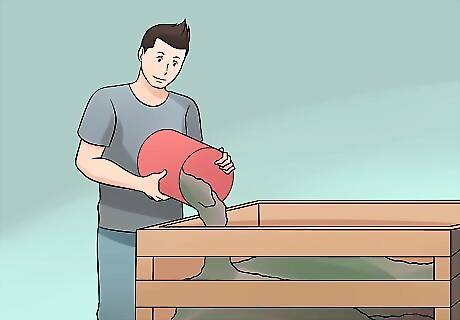
Start a compost pile near your home for your garden. Food that you collect that is no longer suitable for eating is still perfect for decomposing into a nutritious soil, perfect for your fruits, vegetables, and grains.
Supplying Other Needs
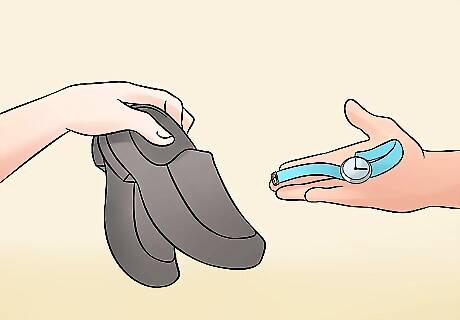
Learn to barter. Many online communities, such as Freegle, Freecycle, and Streetbank, offer listings of items and skills available for free. Sometimes the item may be something someone just wants to give away, or you may find people willing to trade items for skills you have. Look for items you want to get rid of. One's man trash is another man's treasure, so instead of selling your old shoes or watch on eBay, or throwing them away, try using them in exchange for items or services that you need. Remember that you can also barter for services. If your home needs repairs, see if you can exchange some time or skills of your own in exchange for the repair.

Grow your own toiletries. You can plant soapwort in your garden to provide soap and shampoo. Pastes made of baking soda or even plain salt can work as natural, homemade toothpaste.
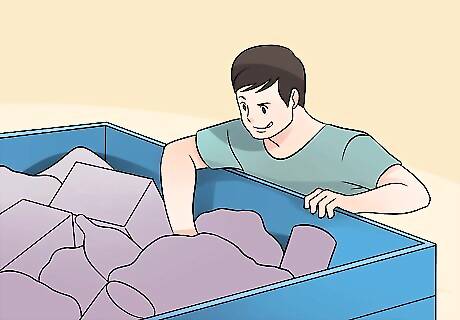
Go “dumpster diving.” Many things are simply thrown away that can be useful to cash-free living. How to Dumpster Dive Discarded newspapers can serve as toilet paper. Stores may discard personal care products like deodorant and hygiene goods that are still safe for use after their “sell-by” date. Many stores and restaurants throw away food. Anything that contains meat, dairy, shellfish, or eggs should not be scavenged. Avoid anything that smells rotten or odd. Foods such as bread, canned goods, and packaged products like chips can usually be eaten safely, but make sure they are wrapped and not dented, torn, or bulging. Be aware that dumpsters may pose hazards such as broken glass, rats, and even biological waste. If you choose to rummage through a dumpster, come prepared: items such as rubber boots, gloves, and flashlights can help you dive safely. Do not dumpster dive in any area that is marked as “No Trespassing” or similar. It may be illegal and is certainly not worth the hassle of being stopped or even arrested.

Arrange a community swap. If you have things in good condition that you no longer use, arrange a swap night. Invite your friends and neighbors to bring things they no longer want, need, or use. You can advertise with flyers or with postings on Craigslist, Facebook, and other social media. This is a great way to get rid of things like baby clothes that children have outgrown or toys they no longer play with. You can also swap books you’ve already read for new-to-you books, or get rid of extra linens and towels in exchange for things you need more of.
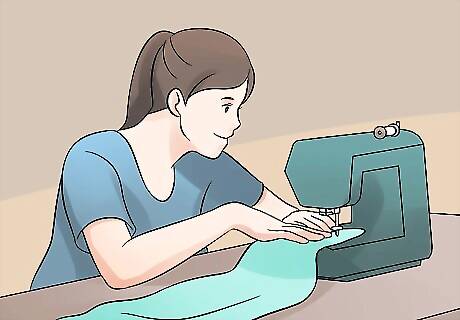
Make your own clothes. Barter for a sewing kit and some fabric, and exchange goods for a few lessons on how to sew. You can scavenge for unused or still usable cloth, towels, and sheets to use as fabric. Fabric and craft stores may also have small scraps they’re willing to give away. Repair holes, tears, rips, and worn spots. Keep any spare pieces of fabric from unwearable items to use as a patch when needed.

Arrange a skill swap. Barter isn’t just for goods and services! Host a community skill-sharing group so that people can teach other what they know and learn things they don’t know. This is also a great way to socialize and make friends without spending money.
Planning Transportation

Sell or trade your car. Owning a car is all but impossible to do without the use of cash unless you have access to a mechanic who accepts trades or bartering, and a gas station which will let you work in exchange for fuel. Check in your area for carpool incentives and communities. If you absolutely must keep a car, some cities offer financial incentives if you carpool with others. You may also be able to ride to work with other people who will help pay for your gas and car upkeep.

Negotiate rides with members of your community. Many people commute daily to work, school, and other places. Exchange food and services for rides to places you need to go. Websites such as Liftshare, Ridester, and Carpool World can also help you find carpooling and ride share options in your community. Hitchhiking can be an option if you need to travel long distances, but exercise caution! Hitchhiking can be dangerous, particularly if you travel alone.

Get a bicycle. If you will be traveling further distances regularly, or walking is not a viable option for you, cycling is a fast, eco-friendly way to travel. It will also help you stay fit! Attach a basket to the front and back of the bicycle to help carry food and other items.
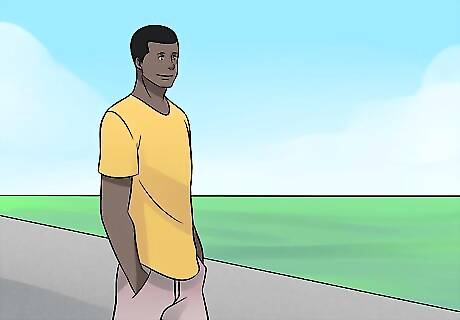
Stay in good health. Walking is the easiest, most accessible and cash-free means of getting around. A healthy, hydrated body can cover at least 20 miles (32.2 km) in a day without strain, but you'll need proper shoes, water, and food to cover this distance. Prepare emergency backup plans for walks in colder weather. A light snowstorm can quickly turn into a blizzard, and if you are walking several miles from your home, this can become an emergency situation. Consider going with a friend, or making sure someone knows where you will be and what time to expect you back.


















Comments
0 comment